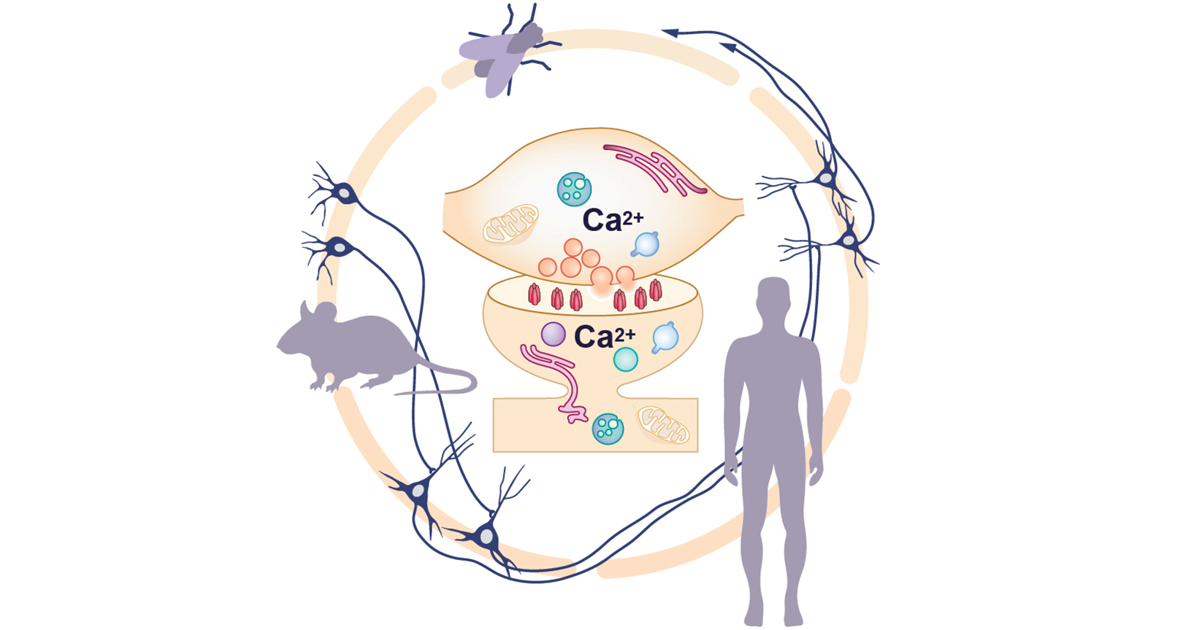Molecular and Cellular Mechanisms of Synaptic Function: Neurotransmitter Release, Signal Transduction and Plasticity
A special issue of Cells (ISSN 2073-4409). This special issue belongs to the section "Cells of the Nervous System".
Deadline for manuscript submissions: closed (15 March 2023) | Viewed by 8514

Special Issue Editors
2. Center for Behavioral Brain Sciences, Otto-von-Guericke University Magdeburg, 39120 Magdeburg, Germany
Interests: synapse biology; NMDA receptors; long-distance protein transport; activity-dependent gene expression; membrane trafficking; activity-regulated autophagy
Special Issues, Collections and Topics in MDPI journals
Interests: neural circuits; electrophysiology; calcium imaging techniques; behavioural neuroscience
2. Institute for Chemistry and Biochemistry/SupraFAB, Berlin, Germany
3. NeuroCure Cluster of Excellence, Charité Universitätsmedizin, Takustr. 6, 14195 Berlin, Germany
Interests: regulation of neurotransmitter release; presynaptic plasticity; super-resolution microscopy of synaptic scaffolds; aging; neuronal autophagy
Special Issue Information
Dear Colleagues,
Brain information processing and storage, the basis of memory function, rely on the intercellular communication between neurons, polarized cells with complex cellular architecture. They predominantly communicate with each other via highly specialized contact sites, so-called chemical synapses. Synapses connecting two neurons, as well as neuro-muscular junctions (NMJs), represent the major structures crucial for signal transduction mediated by neurotransmitters. The effective conversion of electrical signals to chemical and back to electrical allows the nervous system to maintain adaptive responses to environmental stimuli. Synapses can change their signalling strength based on inputs from other neurons, a feature termed ‘synaptic plasticity’, widely considered as the cellular mechanism underlying learning and memory.
Recent technological advancements, such as the development of optogenetic tools and indicators to study neuronal transmission and connectivity within neuronal circuits in vivo, CRISPR/Cas technology, progress in computer simulations, and the development of advanced imaging techniques, are crucial for broadening our understanding of brain function and plasticity.
This Special Issue, entitled “Molecular and cellular mechanisms of synaptic function: neurotransmitter release, signal transduction and plasticity", aims to bridge recent multi-scale advances in the research of synaptic transmission and plasticity, ranging from Drosophila to the mammalian brain, in both health and disease. We plan to address the cellular and molecular aspects of neuronal excitability, calcium homeostasis, and the mechanisms of synaptic plasticity underlying behavioural change caused by experience. Additionally, this Special Issue aims to summarize the knowledge in this area of research and provide insights into the most recent developments in the field of synaptic plasticity. Therefore, we invite authors to contribute original research and review articles on each of these aspects.
We welcome the submission of work covering, but not limited to, the following topics:
- Synaptic processes of neurotransmitter release;
- Synaptic plasticity, including structural plasticity at the pre- and postsynaptic scaffold;
- Molecular dynamics at the synapse;
- Synapse and active zone assembly/maintenance;
- Synapto-dendritic plasticity in development and learning;
- Network connectivity;
- Cognitive and emotional responses to multisensory environmental stimuli.
Dr. Anna V. Karpova
Dr. Sanja Bauer Mikulovic
Dr. Marta Maglione
Guest Editors
Manuscript Submission Information
Manuscripts should be submitted online at www.mdpi.com by registering and logging in to this website. Once you are registered, click here to go to the submission form. Manuscripts can be submitted until the deadline. All submissions that pass pre-check are peer-reviewed. Accepted papers will be published continuously in the journal (as soon as accepted) and will be listed together on the special issue website. Research articles, review articles as well as short communications are invited. For planned papers, a title and short abstract (about 100 words) can be sent to the Editorial Office for announcement on this website.
Submitted manuscripts should not have been published previously, nor be under consideration for publication elsewhere (except conference proceedings papers). All manuscripts are thoroughly refereed through a single-blind peer-review process. A guide for authors and other relevant information for submission of manuscripts is available on the Instructions for Authors page. Cells is an international peer-reviewed open access semimonthly journal published by MDPI.
Please visit the Instructions for Authors page before submitting a manuscript. The Article Processing Charge (APC) for publication in this open access journal is 2700 CHF (Swiss Francs). Submitted papers should be well formatted and use good English. Authors may use MDPI's English editing service prior to publication or during author revisions.
Keywords
- synaptic plasticity
- signal transduction
- active zone
- post-synaptic density
- synaptic vesicle release
- extracellular matrix
- network connectivity
- cognitive and emotional responses to multisensory environmental stimuli
Benefits of Publishing in a Special Issue
- Ease of navigation: Grouping papers by topic helps scholars navigate broad scope journals more efficiently.
- Greater discoverability: Special Issues support the reach and impact of scientific research. Articles in Special Issues are more discoverable and cited more frequently.
- Expansion of research network: Special Issues facilitate connections among authors, fostering scientific collaborations.
- External promotion: Articles in Special Issues are often promoted through the journal's social media, increasing their visibility.
- e-Book format: Special Issues with more than 10 articles can be published as dedicated e-books, ensuring wide and rapid dissemination.
Further information on MDPI's Special Issue polices can be found here.








